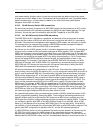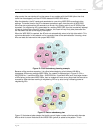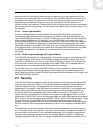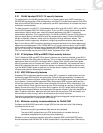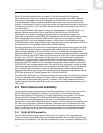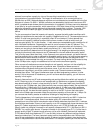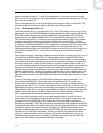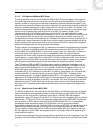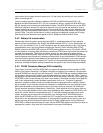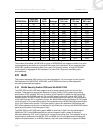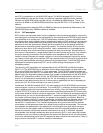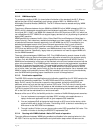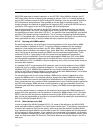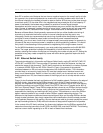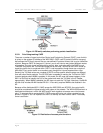
Voice over Wireless LAN Solution Guide v1.0 December 2005
______________________________________________________________________________________________________
Page 35
up the other half and were known to scale up to 10, then likely the resulting mix may scale to
about nine calls per AP.
There is another important difference between the PDA and WLAN Handset 2210/11/12.
Because the WLAN Handset 2210/11/12 has a companion device, namely the WTM 2245, per-
AP call capacity can be tracked and ultimately enforced. The MVC 2050 does not use the WTM
2245 and number of calls per AP cannot be enforced. Any such similar call admission control
feature would have to be implemented on an AP such that the AP could not only determine the
number of PDAs associated but also identify a voice call from other data traffic to and from the
various PDAs. The point is that there is no way to enforce call admission control per AP today.
Note that this same distinction also applies to the IP Softphone 2050 and MCS Client.
2.4.2 Battery life conservation
Devices that utilize the power-saving features of 802.11 sometimes power off their radios for
periods of time to save battery life, though the WLAN Handset 2210/11/12 only sleeps when on-
hook, not in the middle of a call. It is still required to listen to certain beacons: every n-th beacon
as specified by client, and every beacon containing a Delivery Traffic Indication Map (DTIM).
Default values on the WSS 2300 have the AP 2330 sending beacons every 100 ms with a DTIM
in every beacon. Increasing both the beacon interval and DTIM interval can extend the battery life
of power-saving devices. The higher the values, though, the less responsive power-saving
devices are to incoming traffic, such as calls. Higher values also cause broadcast and multicast
rates to become more constrained, because multicast traffic is also distributed at DTIM intervals.
You should derive optimal values based on the applications and devices in use on the network
and their associated benefits to battery life. There is no recommended setting that fits all design
scenarios, so keep the default settings unless there is a specific need to tune these parameters.
2.4.3 WLAN Telephony Manager 2245 scalability
The number of calls an individual WTM 2245 can support is dependent on the number of WTM
2245s in the subnet. Assuming a 100 Mbps full-duplex connection to the network, a single stand-
alone WTM 2245 can manage up to 80 active calls. If two WTM 2245s are installed (master/slave
configuration) then each can support up to 64 active calls for a total of 128 calls. Table 1 lists the
call capacity scaling numbers when additional WTM 2245s are added. Note that if you deploy one
WTM 2245 in each of two subnets, then each is the master of its subnet and each can support 80
calls. Each independently tracks handsets, associations, and so on. This point is important
because it shows the need to have one handset subnet per geographic site or Mobility Domain.
As an example, if you have two subnets for handsets in a campus and you are directing through
AAA some handsets to one subnet and some to the other, then you have two Call Admission
Control domains operating independently. Specifically, if both specified a limit of seven calls per
AP, then it would be possible to have seven calls admitted by each respective WTM 2245 on the
same AP—the AP would be oversubscribed by 2:1! If multiple subnets are required for some
reason, the best way to support this configuration is to leverage the L3 WTM 2245 design in
which the WTM 2245s are all in one subnet but SVP is routed from the second client subnet.
While this is now a supported configuration, all the engineering guidelines for latency, jitter, and
packet loss must still be maintained. Note that the L3 design guidelines for having clients and
WTM 2245 in different subnets does not mean that the WTM 2245 master and slaves can also be
separated by routers—they must still be collocated in the same VLAN/subnet.



